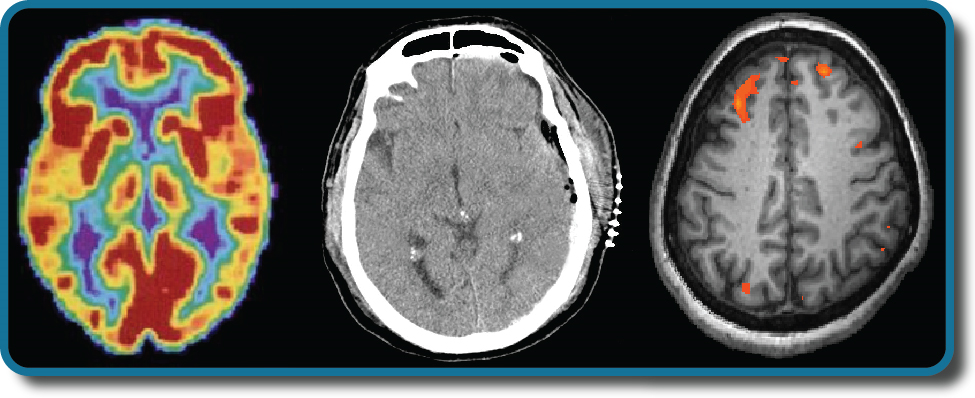3.1: Utangulizi wa Biopsychology
- Page ID
- 177533
Malengo ya kujifunza
- Eleza utaratibu wa kibiolojia kwamba msingi tabia

Je! Umewahi kuchukua kifaa mbali ili kujua jinsi inavyofanya kazi? Wengi wetu tumefanya hivyo, iwe kujaribu kutengeneza au tu kukidhi udadisi wetu. Kazi za ndani za kifaa mara nyingi hutofautiana na interface yake ya mtumiaji nje. Kwa mfano, hatufikiri juu ya microchips na nyaya wakati sisi kugeuka juu ya kiasi kwenye simu ya mkononi; badala yake, sisi kufikiri juu ya kupata kiasi haki tu. Vile vile, kazi za ndani za mwili wa mwanadamu mara nyingi hutofautiana na kujieleza nje ya kazi hizo. Ni kazi ya wanasaikolojia kupata uhusiano kati ya hizi-kwa mfano, kufikiri jinsi firings ya mamilioni ya neurons kuwa mawazo.
Sura hii inajitahidi kuelezea utaratibu wa kibiolojia unaosababisha tabia. Msingi huu wa kisaikolojia na anatomiki ni msingi wa maeneo mengi ya saikolojia. Katika sura hii, utajifunza jinsi genetics inavyoathiri sifa zote za kisaikolojia na kisaikolojia. Utakuwa ukoo na muundo na kazi ya mfumo wa neva. Na, hatimaye, utajifunza jinsi mfumo wa neva unavyoingiliana na mfumo wa endocrine.
References
Arnst, C. (2003, November). Commentary: Getting rational about health-care rationing. Bloomberg Businessweek Magazine. Retrieved from http://www.businessweek.com/stories/...care-rationing
Berridge, K. C., & Robinson, T. E. (1998). What is the role of dopamine in reward: Hedonic impact, reward learning, or incentive salience? Brain Research Reviews, 28, 309–369.
Chandola, T., Brunner, E., & Marmot, M. (2006). Chronic stress at work and the metabolic syndrome: A prospective study. BMJ, 332, 521–524.
Comings, D. E., Gonzales, N., Saucier, G., Johnson, J. P., & MacMurray, J. P. (2000). The DRD4 gene and the spiritual transcendence scale of the character temperament index. Psychiatric Genetics, 10, 185–189.
Confer, J. C., Easton, J. A., Fleischman, D. S., Goetz, C. D., Lewis, D. M. G, Perilloux, C., & Buss, D. M. (2010). Evolutionary psychology: Controversies, questions, prospects, and limitations. American Psychologist, 65, 110–126.
Gaines, C. (2013, August). An A-Rod suspension would save the Yankees as much as $37.5 million in 2014 alone. Business Insider. Retrieved from www.businessinsider.com/an-a-...in-2014-2013-8
Gardner, E. L. (2011). Addiction and brain reward and antireward pathways. Advances in Psychosomatic Medicine, 30, 22–60.
George, O., Le Moal, M., & Koob, G. F. (2012). Allostasis and addiction: Role of the dopamine and corticotropin-releasing factor systems. Physiology & Behavior, 106, 58–64.
Glaser, R., & Kiecolt-Glaser, J. K. (2005). Stress-induced immune dysfunction: Implications for health. Nature Reviews Immunology, 5, 243–251.
Gong, L., Parikh, S., Rosenthal, P. J., & Greenhouse, B. (2013). Biochemical and immunological mechanisms by which sickle cell trait protects against malaria. Malaria Journal. Advance online publication. doi:10.1186/1475-2875-12-317
Hardt, O., Einarsson, E. Ö., & Nader, K. (2010). A bridge over troubled water: Reconsolidation as a link between cognitive and neuroscientific memory research traditions. Annual Review of Psychology, 61, 141–167.
Macmillan, M. (1999). The Phineas Gage Information Page. Retrieved from http://www.uakron.edu/gage
March, J. S., Silva, S., Petrycki, S., Curry, J., Wells, K., Fairbank, J., … Severe, J. (2007). The treatment for adolescents with depression study (TADS): Long-term effectiveness and safety outcomes. Arch Gen Psychiatry, 64, 1132–1143.
Mustanski, B. S., DuPree, M. G., Nievergelt, C. M., Bocklandt, S., Schork, N. J., & Hamer, D. H. (2005). A genome wide scan of male sexual orientation. Human Genetics, 116, 272–278.
National Institute on Drug Abuse. (2001, July). Anabolic steroid abuse: What are the health consequences of steroid abuse? National Institutes of Health. Retrieved from www.drugabuse.gov/publication...-steroid-abuse
Squire, L. R. (2009). The legacy of patient H. M. for neuroscience. Neuron, 61, 6–9.
Tienari, P., Wynne, L. C., Sorri, A., et al. (2004). Genotype–environment interaction in schizophrenia spectrum disorder: long-term follow-up study of Finnish adoptees. British Journal of Psychiatry, 184, 216–222.
University of Utah Genetic Science Learning Center. (n.d.). What are genetic disorders? Retrieved from learn.genetics.utah.edu/conte...ers/whataregd/


